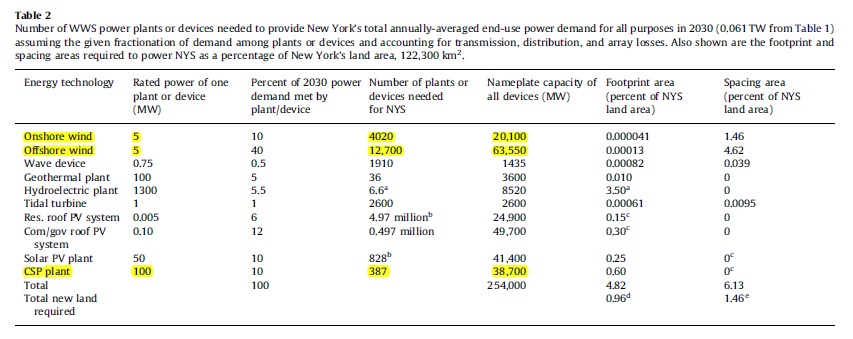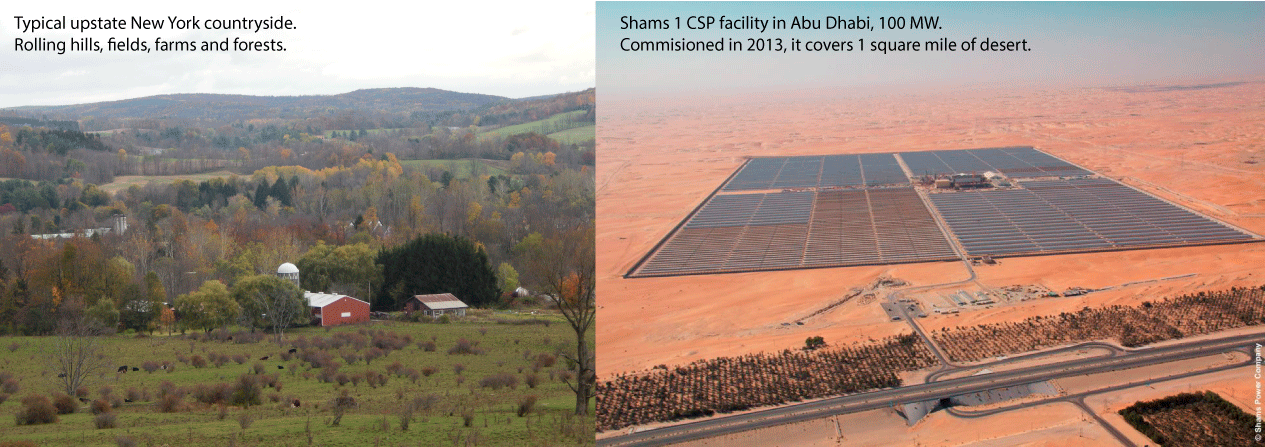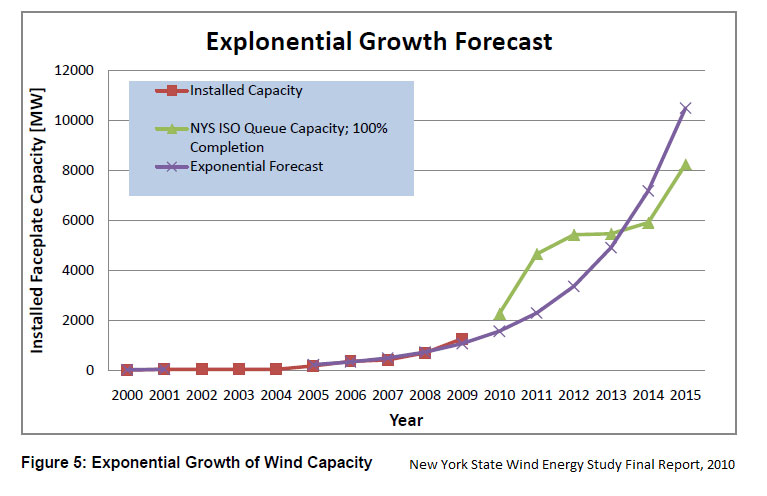This was the first piece I ever published at The Energy Collective, Nov. 17, 2013.
Critique of New York State WWS 100% Renewable Energy Plan (.pdf).
I feel compelled to respond to a paper that is widely referenced by anti-hydrofracking activists as proof that New York can move beyond fossil fuels and power 100% of its energy needs with renewables. The WWS (Wind, Water and Solar) Plan for New York (Jacobson et al., 2013) is part of a series of papers authored chiefly by Prof Mark Jacobson from Stanford University that can be found here. The New York paper includes contributions from Cornell University professors Bob Howarth and Tony Ingraffea. Jacobson attempts to makes the case that society can acquire all of the energy it needs for all purposes in a relatively short period of time from a combination of solar, wind, hydro and geothermal. Jacobson is opposed to nuclear power and also opposes all hydrocarbon fuels whether bio or fossil based because of the contention that all CO2 emissions must be eliminated in order to prevent a catastrophic melting of the arctic sea ice. The plan calls for an 80% conversion to WWS by 2030 and 100% conversion by 2050. Unfortunately the plans are deeply flawed from a practical and technical perspective.
Jacobson makes broad assumptions about the suitability of many different technologies and offers little evidence to back up his claims. Such assumptions include the complete abandonment of hydrocarbon fuels for vehicles, heavy equipment, ships and planes and conversion to battery and hydrogen fuels. No proof is offered that these new technologies can meet the performance requirements of existing machines. Nor are any references from industry or the military presented to justify the technical feasibility of the claims. Jacobson contends that some electric and fuel cell vehicles have come to market but that hardly meets the burden of proof that a century and a half of performance based industrial development can be converted over wholesale to new equipment that is not currently proven in real world use.
A common flaw in the WWS model is the use of unproven technologies along with insufficient analysis of their land use impacts. For example, wave devices, tidal turbines and enhanced deep well geothermal are included even though they are not mature technologies. The WWS plan has virtually no discussion of the land use impacts of new power transmission or discussion of hydrogen storage and distribution. Other writers have disputed Jacobson’s assumptions about electricity storage and economics here and here. Debate over the feasibility of intermittent power sources to keep the grid running can be found here and here, a response to the critics by Jacobson can be found here. A much more realistic model was produced this year by NREL in their Renewable Futures Study (NREL, 2012), they conclude that 80% of energy can be supplied by renewables by 2050; they detail emerging technologies but do not include them in the models, they do include biomass and accept that some uses of hydrocarbons cannot be replaced.
I am not going to attempt to cover every point Jacobson raises, but I will focus on some practical issues as they relate to New York. Specifically, the wind and solar models are impossible as presented. In all of the wind and solar cases (onshore and offshore wind, CSP and PV solar) capacity factors are overstated, land use is understated and public acceptance is never addressed.
The chart below is taken from the WWS NY paper and details the numbers of each type of device that would be required for the plan. I added the yellow highlights.
Concentrated Solar Power – CSP
The most glaring defect in the entire model is the use of CSP, concentrated solar power, which is a thermal technology used in the desert and not applicable to New York. I would challenge the authors to find any qualified engineers or developers who would certify these types of facilities for NY. The authors call for 387 CSP plants rated at 100 MW each to be built throughout the state. Each 100 MW CSP plant requires roughly 1 square mile of flat, unburdened land and requires the highest levels of solar insolation. New York has the opposite characteristics: long, cold, dark winters and rolling hills covered in forests, fields and farms. By the authors’ own figures, 327.3 square miles of land would have to be cleared to construct 387 of these projects across the state.
CSP plants in New York would most likely never function in the winter when snow and ice are common and the sun might not emerge for weeks at a time. NREL, the National Renewable Energy Laboratory, lists seven southwestern states as being CSP compatabile: California, Arizona, New Mexico, Nevada, Colorado, Utah, and Texas in its Solar Market Report, 2010 (NREL, 2011). The CSP map from NREL shows that New York is one of the worst places in the USA to attempt CSP. The photograph of the Shams 1 CSP facility in Abu Dhabi shows what a modern 100 MW CSP looks like, and the landscape clearly does not look anything like upstate New York. 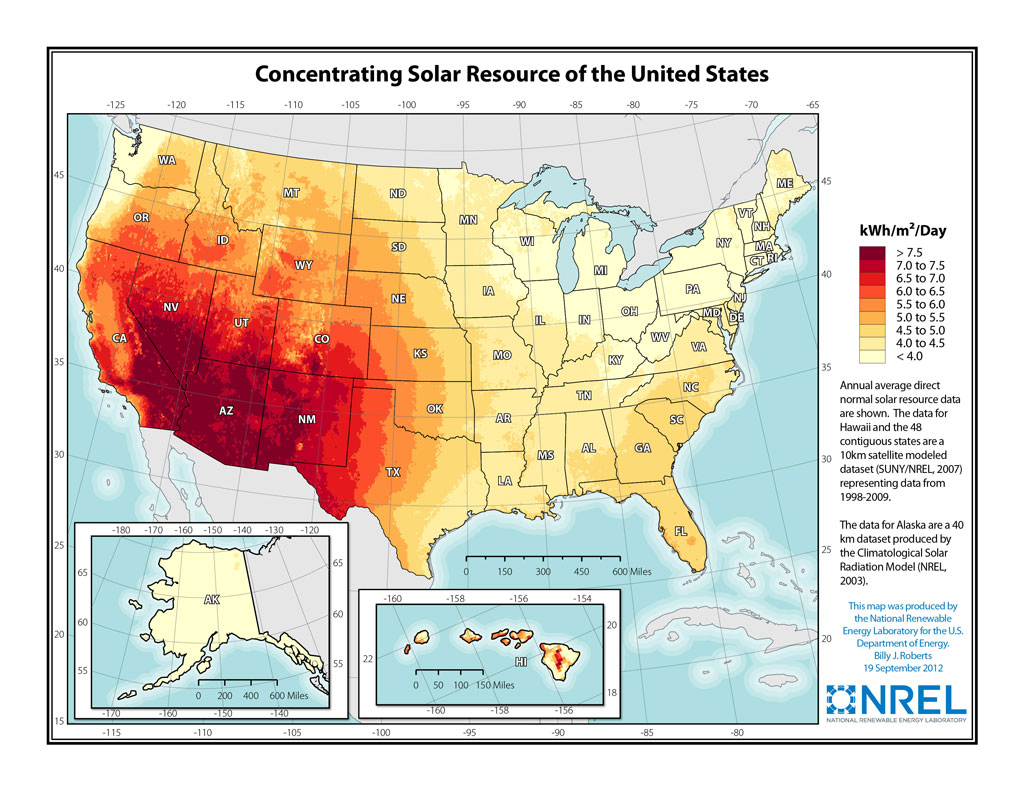 Photovoltaics – PV
Photovoltaics – PV
Regarding solar PV, Jacobson overstates the capacity factor of their proposed farms in New York by cherry-picking an unusually high efficiency PV module, the SunPower E20, which is not reflective of the mean for the industry. According to the sales literature, “SunPower E20 panels are the highest efficiency panels on the market today”(SunPower, n.d.) with 20% efficiency while the industry average for crystalline PV is closer to 15%. So while the SunPower E20 modules do exist there is no discussion of module availabilities or specific costs and it is misleading to use them in the model because the scale of installations described in the paper would likely necessitate the use of common modules rather than select high performance modules. It is like describing a huge vehicle fleet made from Ferraris rather than Fords. Many PV farms globally use cheaper thin-film varieties that offer even lower efficiencies and require more land. The authors state that the New York PV farms will have a capacity factor of 18% which is the average for the entire country (NREL, 2011) when New York is on the lower end of solar potential.
In 2010, the typical efficiency of crystalline silicon-based PV commercial modules ranged from 14% for multicrystalline modules to 19.3% for the highest-efficiency monocrystalline modules (average monocrystalline module efficiency was 14%). For thin-film modules, typical efficiencies ranged from 7% for a-Si modules to about 11% for CIGS and CdTe modules. (NREL, 2011)
The WWS model describes 136.4 square miles of land devoted to photovoltaic farms in addition to the 327.3 sq miles of CSP for a total of 463.7 sq miles of land that must be cleared of existing fields, forests and farms to make space for the solar developments. Ironically, Tompkins County, NY, home of Ithaca and Cornell University where some of the authors are employed is roughly the same size at 476 sq miles. Does clearing an entire county’s worth of land to install underperforming solar technologies represent proper stewardship of the land? Perhaps that land is better left growing plants that clean the air, soil and water, sequester carbon and provide crops and habitat.
Wind Onshore
The wind model presented is troubling because it assumes to utilize as many wind turbines as conceivably possible, basically placing turbines on every single hill with decent wind in the state without regard to people already living there. Similar to the trick in the PV model, the authors choose particularly large turbines that allow them to overstate production. 5 MW turbines are used in the model when the norm around the US is 1-3 MW. By choosing larger turbines the authors can project higher production and higher capacity factors than typically reported for New York because taller turbines reach higher into more consistent wind streams. The Cornell Wind Study states that a 27% capacity factor is typical for NY (Hoerig & Smolenski, 2010) while Jacobson et al claim “30% or higher” (Jacobson et al., 2013) capacity factors.
Taller turbines increase the environmental impact and spacing demands. Larger turbines cast bigger shadows, longer wakes, make more noise and require bigger access roads for larger cranes and wider setbacks from homes and structures for ice-throw safety. Jacobson consistently claims across his papers that turbines use very little land and that the space around them can continue to be used for farming. This is true but ignores the impacts on residents, wind turbines make poor neighbors. Land use requirements for access roads and power lines are also not sufficiently addressed.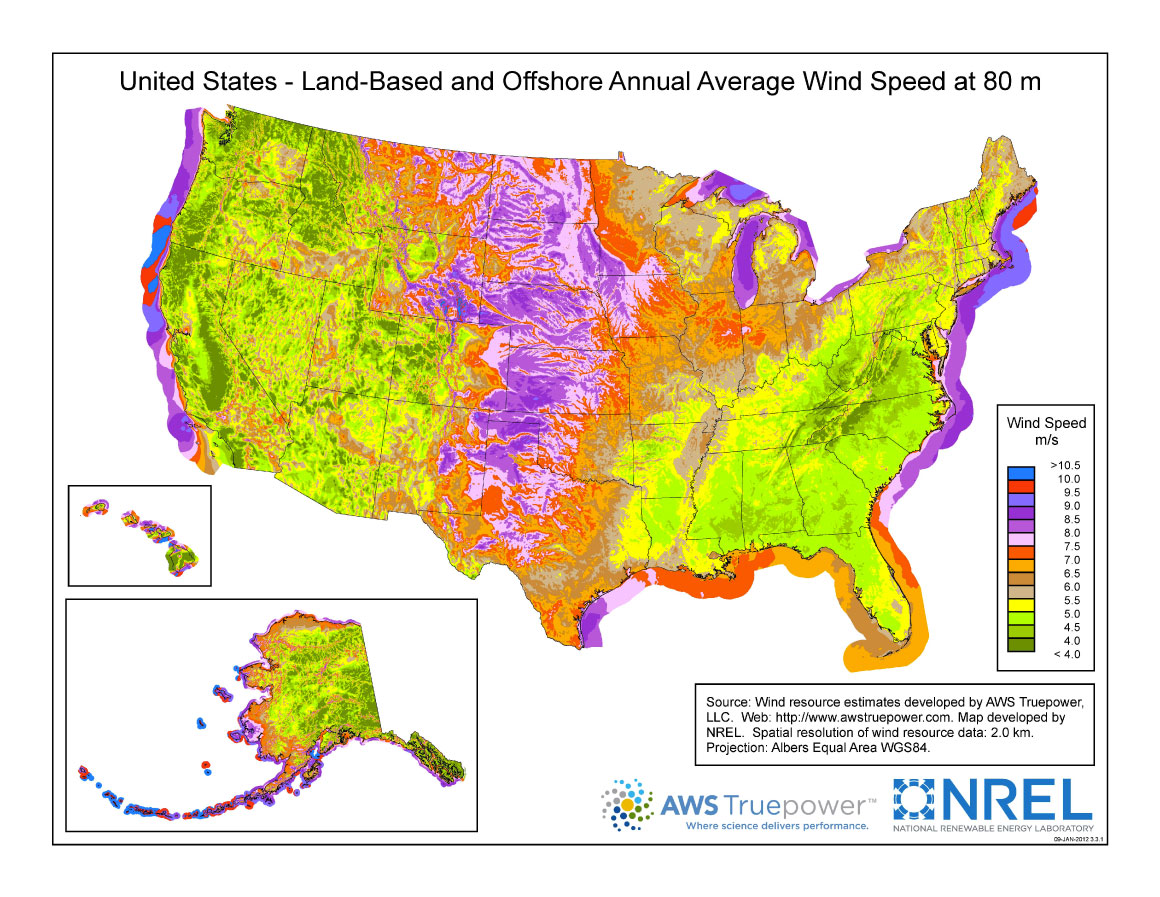 New York State has fairly marginal wind resources compared to other parts of the country and installing over 4000 turbines for a total of 20,100 MW on shore dwarfs all expectations of the industry and state authorities. To achieve 20,100 MW would require exponential growth of the industry over the coming decades and assumes total public acceptance that has not been demonstrated.
New York State has fairly marginal wind resources compared to other parts of the country and installing over 4000 turbines for a total of 20,100 MW on shore dwarfs all expectations of the industry and state authorities. To achieve 20,100 MW would require exponential growth of the industry over the coming decades and assumes total public acceptance that has not been demonstrated.
The numbers presented for offshore wind are truly astounding. 12,700 turbines at 5 MW each for a total capacity of 63,550 MW. The authors do fairly note that there is not a single off shore wind farm anywhere in the United States in 2013, but that does not stop them from asserting that some of the busiest multiuse waterways will be packed to the maximum extent with a forest of very large turbines. The available waterways in NY are the coasts of Long Island and parts of Lake Ontario and Lake Erie. There is no discussion of impacts on shipping lanes, boating, fisheries, recreation or general public acceptance. No discussion of bathymetric properties of the sea floor and whether the farms of the proposed scale are even technically possible. Jacobson also never discusses wind shading and the principle that turbines block the wind from one another. Densely packed wind farms as described in the models would have lower power production averages per turbine due to wind shading effects.
The proposed wind farm off Cape Cod for 130 3.2 MW turbines has languished for years due to sharp public controversy. The notion that a proposal 100 times larger in nearby waters would be accepted by the public defies common sense. This is not to say that there should no wind farms offshore, but we must be realistic with projections. To offer another perspective: according to the Global Wind Energy Council, the total global offshore installed capacity in 2012 is 5,415 MW compared to the proposed 63,550 MW in New York alone.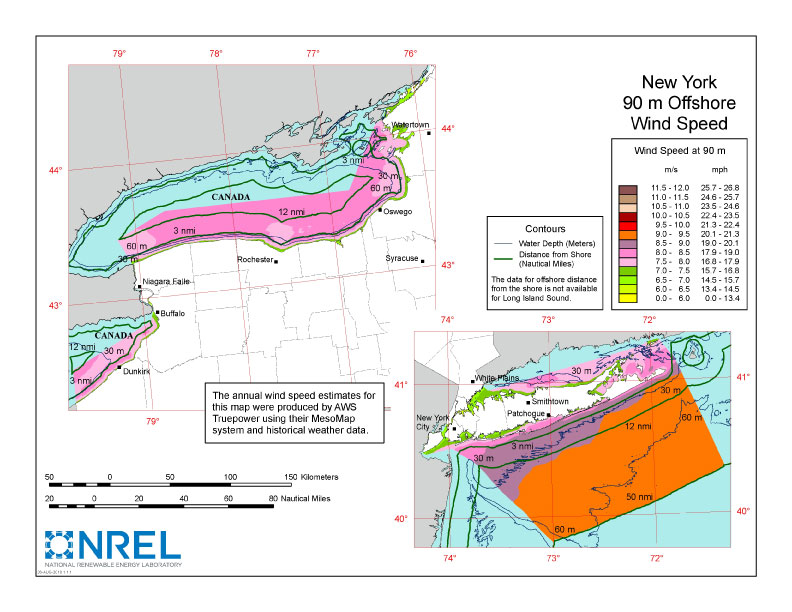 Conclusion
Conclusion
I hate to be critical of proposals for wind and solar because I hope these industries continue to grow, but the WWS plan lacks any technical credibility whatsoever. It has been widely criticized by many writers and for good reason. I only chose to add to the pile because I see the paper being hailed for political purposes by those with an agenda opposing drilling for natural gas. Mark Jacobson has been making appearances on television claiming this is all technically feasible, well I have to disagree.
I share the authors concerns about global warming and pollution but the answer is not to take underperforming technologies and overbuild them to make up for their lack of performance, this is like having an unreliable car and buying two more so that you can always have one working when you need it. New York is not a good location for CSP and is marginal for wind and PV, these technologies should certainly be utilized but they cannot be expected to provide the majority of New York’s energy needs. On the other hand New York has vast resources of biomass and waste going unutilized that the WWS model rejects. Garbage, sewage, farm waste and biomass can all be gasified and injected into the natural gas pipelines as carbon neutral or even carbon negative fuels that offer superior mechanical performance in existing machines. These resources would not meet all of New York’s needs but they could make a sizable contribution and are mostly going unused today.
Performance cannot be ignored in the discussion of new energy solutions. All too often advocates for renewable energy reduce the issues to academic equivalency equations that assume fossil fuels can simply be replaced by alternatives without examining the mechanical requirements involved. Society moved from biomass to coal to petroleum to natural gas because at every step competitive performance advantages were achieved. Historically, the military and industry have been the arbiter of these conversions and the ultimate proving grounds have been the battlefield and the marketplace. If proposed energy solutions do not enable the military to fight and win battles or industry to get heavy work done more effectively then the proposals will not be adopted. It is well worth noting that Jacobson et al never detail combat vehicles or heavy equipment like those required to manufacture and install wind and solar devices. There is a large body of literature on clean energy futures that are far more thorough and credible than the WWS study, this study does not pass even a cursory examination.
Maps provided by NREL, http://www.nrel.gov/gis/maps.html
Hoerig, C., & Smolenski, K. (2010). 2010 New York State Wind Energy Study.
Jacobson, M. Z., Howarth, R. W., Delucchi, M. a., Scobie, S. R., Barth, J. M., Dvorak, M. J., … Ingraffea, A. R. (2013). Examining the feasibility of converting New York State’s all-purpose energy infrastructure to one using wind, water, and sunlight. Energy Policy, 57, 585–601. doi:10.1016/j.enpol.2013.02.036
NREL. (2011). 2010 Solar Technologies Market Report, (November).
NREL. (2012). Renewable Electricity Futures Study (Vol. 1).
SunPower. (n.d.). SunPower E20 / 435 SOLAR PANEL.
